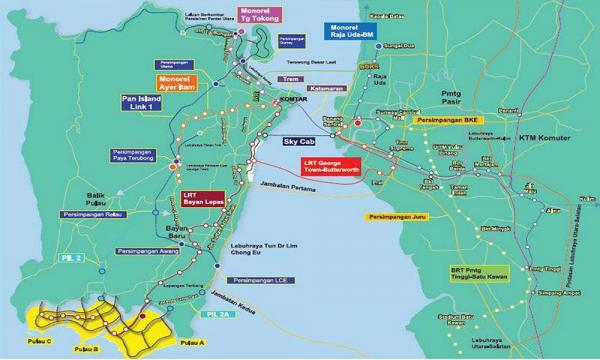LETTER | Providing more public transport together with more roads is a multidimensional approach to building a feasible infrastructure for public mobility. That is the philosophy underlying the Penang Transport Master Plan.
Each country constructs public mobility infrastructure according to its context. Not a single country in the world has stopped using roads or stopped constructing new ones as part of its strategy to increase public mobility. In the case of Penang, the multidimensional and multimodal approach has been adopted.
A recent article "Going off-road for sustainability, equity, and health" disparages the multidimensional approach. The authors expressed caution over the complementary approach taken to build the public mobility infrastructure in Penang, drawing from examples in the likes of Zurich, Singapore, and others to show that the multidimensional model does not work.
Nothing can be further than the truth. Those cities are the finest examples of the multidimensional approach.
Take for example, Zurich, despite having multi modes of public transport, the canton spent RM804 million (195 million Swiss francs) in 2017 alone to widen its northern bypass to six lanes. In fact, the Swiss parliament has budgeted RM4.9 billion (1.2 billion Swiss francs) for their "Fund for the Special Financing of Road Transport" for several road expansion projects that commenced in 2017. In total, Switzerland allocated RM7.4 billion (1.8 billion Swiss francs) in last year alone for various road-building projects, as stated in the "Roads and Traffic 2017" report by the Swiss Federal Roads Office.
Singapore's multidimensional approach consists of 10 expressways along with MRT, monorail, LRT, feeder bus network, etc. Nevertheless, the highly urbanised city-state continues to build new roads and expands current ones.
For instances, the new road between MacRitchie Viaduct and Adam Flyover (RM189 million/SGD63.6 million), Tuas West road extension (RM47 million/SGD15.8 million), viaduct from Tampines Expressway to Pan-Island Expressway and Upper Changi Road East (RM65.5 million/SGD22 million), major arterial road from CTE to Yishun Avenue 6 (RM29.8 million/SGD10 million), road for Thomson Line (RM67.77 million/SGD22.72 million), road network enhancement at Upper Bukit Timah Road/Jalan Anak Bukit (RM45.32 million/SGD15.2 million), new road between Senja Road and Kranji Expressway (RM26.3 million/SGD8.79 million), and new road between Lorong Halus and Pasir Ris Farmway 2 Including expansion of KPE/TPE Interchange (RM31.3 million/SGD10.5 million).
All these road construction projects amount to RM502 million in just last year alone, stated in Singapore's 2017 budget. At the time of writing, Singapore is currently building its eleventh expressway, the 21.5km North-South Corridor, with an estimated cost of RM23 billion (SGD8 billion). This new expressway is a good example of the multidimensional model for it will have a highway for cars, dedicated bus lane, and designated cycling lane. It has various modes of transport complementing each other to increase public mobility.
These two top advanced cities, Zurich and Singapore, both known for being the most sustainable actually employ the multidimensional model that provides public transport and roads in a complementary manner.
This approach does not prioritise roads over public transport as mistakenly assumed by the abovementioned article. The authors do not seem to have consulted the actual transportation plans and budget of the two cities before jumping to their misplaced conclusion.
As shown empirically through actual numbers and transportation plans, the sustainable approach is also the multidimensional approach, at least in the example of Switzerland and Singapore.
As seen in these countries, the multi-dimensional model has proved to be successful in increasing public mobility through various modes of public transport complementing each other, including strategic use of new roads. And this is the model employed in the Penang Transport Master Plan.
The writer is a former member of the traffic management committee and urban planning committee of the Seberang Perai Municipal Council.
The views expressed here are those of the author/contributor and do not necessarily represent the views of Malaysiakini.


